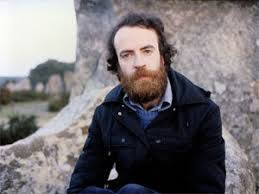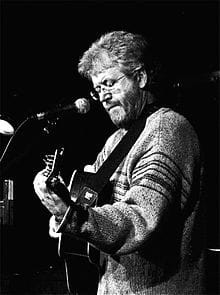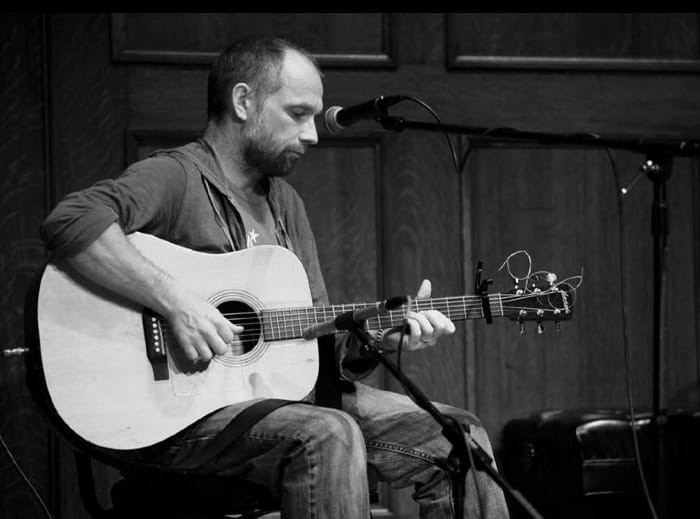For guitarists seeking to explore musical genres beyond the mainstream, traditional Irish music, or “trad” as it’s commonly known, offers a captivating and often overlooked avenue. While not always in the limelight, the world of guitar accompaniment in trad Irish music is rich with history, technique, and profound musical rewards. Specifically, we’re talking about the instrumental dance music forms: jigs, reels, slip-jigs, hornpipes, and even polkas – a testament to Ireland’s diverse historical influences.
Delving into these ancient tunes presents guitarists with a unique blend of challenges and opportunities. My own journey into this genre, spanning over two decades, has been a constant dance between honoring tradition and discovering my own voice within it. Every step of this learning process has been invaluable.
If you’re intrigued to explore the vibrant world of Irish trad guitar, I’d like to share some insights gleaned from my own experiences, hoping to smooth out your path and perhaps save you from some of the missteps I encountered early on.
Iconic Irish Guitarists in Traditional Music
One of the best ways to understand and appreciate any musical genre is to listen to its masters. In the realm of traditional Irish guitar, several players have paved the way and set benchmarks of excellence. Here are a few essential names to discover:
 Mícheál Ó Domhnaill playing guitar
Mícheál Ó Domhnaill playing guitar
Mícheál Ó Domhnaill: Emerging in the 1970s with the legendary Bothy Band, Mícheál Ó Domhnaill injected a new energy into traditional Irish music guitar. His powerful, driving rhythms, sometimes reminiscent of power chords, resonated with a younger generation and expanded the audience for these timeless tunes.
Learn more about Mícheál Ó Domhnaill on Wikipedia >>
 Dáithí Sproule playing guitar in black and white
Dáithí Sproule playing guitar in black and white
Dáithí Sproule: Pronounced “Da-Hee,” Dáithí Sproule is a true innovator, credited with pioneering DADGAD tuning in Irish music guitar accompaniment. His masterful work can be best appreciated with Altan, a renowned Donegal band deeply rooted in the tradition. Sproule’s DADGAD style opened up new harmonic possibilities within the genre.
Visit Dáithí Sproule’s Website >>
 John Doyle playing acoustic guitar
John Doyle playing acoustic guitar
John Doyle: John Doyle gained prominence with the band Solas and has since become known for a guitar style that is uniquely his own. Often imitated but never duplicated, Doyle’s approach is characterized by its rhythmic complexity and melodic sensitivity, making him a highly influential figure.
 Denis Cahill playing guitar
Denis Cahill playing guitar
Denis Cahill: Frequently seen alongside fiddle virtuoso Martin Hayes, Denis Cahill embodies the “less-is-more” philosophy. His minimalist and exquisitely tasteful playing allows the melody to truly shine, emphasizing the supportive role of the guitar in traditional Irish music. This brings us to a crucial aspect…
Discover Denis Cahill’s Work >>
The Primacy of Melody in Irish Music
When you pick up your guitar to play along with Irish tunes, whether with fellow musicians or recordings, always remember: the melody reigns supreme. It’s the heart and soul of the tradition. Overpowering or obscuring the melody is akin to silencing the lead vocalist. Coming from a background steeped in rock, blues, jazz, and punk guitar, it took me some time to realize that the spotlight wasn’t mine to grab. My role was to support and enhance the melody.
Eventually, I discovered that this seemingly “supportive” role was incredibly liberating as a guitarist. I could delve into this concept much further, but to keep this article focused, let’s move on to the forms within traditional Irish music.
Understanding the Forms: Jigs and Reels
A common misconception about trad Irish music is that “it all sounds the same,” often dismissed as repetitive “diddley diddley” music. However, this initial impression is superficial. Just as any genre – blues, country, jazz, hip hop – can sound homogenous upon first exposure, deeper listening reveals a wealth of nuance and variation. Traditional Irish music is no different.
The Jig
That “diddley diddley diddley” rhythm is likely a jig. Jigs are in 6/8 time and represent one of the foundational forms in trad music. To get a feel for the jig rhythm, listen to a standard tune like Out On The Ocean. Each jig, while sharing fundamental rhythmic similarities, possesses its own distinct character, much like individual personalities.
The Reel
The other essential form is the reel, typically in 4/4 time and characterized by eighth notes. The Star of Munster is a classic example of a reel in the traditional repertoire. Mastering jigs and reels is your starting point. From there, the exploration of Irish traditional music becomes increasingly rich and rewarding.
Resources for Learning Irish Guitar
Fortunately, there are excellent resources available for guitarists eager to learn traditional Irish music. While I personally enjoy teaching this style, I want to highlight some other fantastic instructors:
Jimmy Murray: Jimmy Murray primarily plays nylon string guitar, bringing a unique and refined sensibility to trad music. His rhythmic precision and melodic phrasing are truly exceptional and offer a different texture within the genre.
Explore Guitar Lessons with Jimmy Murray >>
Dave Curley: Dave Curley is a highly regarded DADGAD player whose work I greatly admire. A quick online search will easily locate both Jimmy and Dave, and I highly recommend checking out their approaches to Irish guitar.
These resources focus on instrumental tunes. But what about the vocal side of Irish music, the sing-along “pub songs” that are so widely recognized?
Irish Pub Songs and Ballads
Thinking about pub songs brings back memories of my early days in Dublin, playing for tips alongside my friend Martin Denning. Martin had a humorous take on the genre, famously singing to the melody of Simon and Garfunkel’s “The Boxer”:
“I am just a folky and my story seldom told
I have plundered Irish music with a lump of German plywood and a capo
All lies and jest, I have learned the songs with just two chords and disregard the rest.
Li la li li. Li la li li. Li la li”
I have a deep affection for many Irish ballads and spent a significant part of my early career performing them with gusto. In many ways, I see these songs as the Irish equivalent of classic rock, and bands like The Dubliners as the Irish Rolling Stones. If you want to immerse yourself in the world of Irish pub songs and ballads, seek out recordings by The Dubliners from the 1960s and 70s, featuring the incomparable Luke Kelly on vocals. It’s truly fantastic music.
The appeal of these songs, compared to instrumental tunes, lies in their sing-along nature and ability to create a more interactive and communal atmosphere, perfect for lively gatherings.
Beneath the surface of these popular songs, however, lies a vast and ancient tradition of Irish song, a rich vein still being explored. But for a guitar-focused blog, that’s a story for another time and place.
Final Thoughts on Irish Guitar Music
If you’ve never considered directing your guitar towards the captivating intricacies of Irish music, an entire world of musical discovery awaits you. You’re in for a treat.
About the Author
 Patsy O'Brien author of the article
Patsy O'Brien author of the article
Hailing from Cork, in the south of Ireland, Patsy O’Brien is a globetrotting guitarist who has shared stages and studios with some of the leading figures in Irish music.
An award-winning songwriter and highly sought-after guitarist, Patsy’s seamless fusion of songwriting and guitar artistry has earned him recognition from NPR, who featured his arrangement of “The Star Of The County Down” on their “All Songs Considered” program.
For more information, visit his website, or connect with him on Facebook and Instagram.
